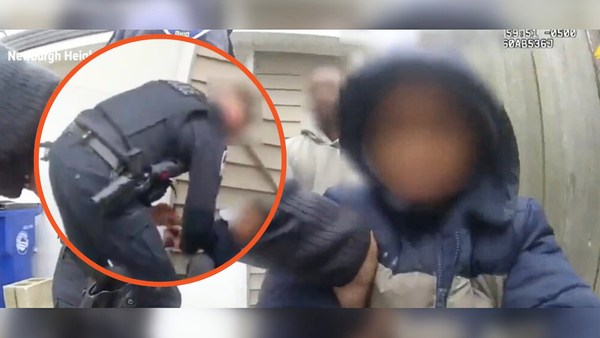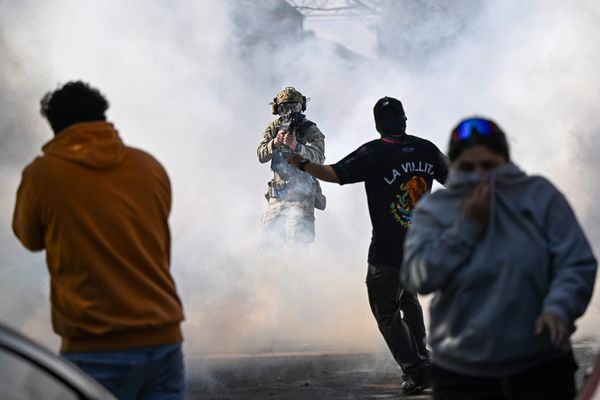
In 1989, world leaders made a historic commitment to children when the United Nations Convention on the Rights of the Child (UNCRC) was adopted. The international treaty, since ratified by 196 countries including the UK, obliges governments to protect rights related to all aspects of children’s lives, from education and play to safety from violence.
Yet in 2007, Prof Laura Lundy, a former barrister and co-director of the Centre for Children’s Rights at Queen’s University Belfast, identified a major barrier to the treaty’s meaningful application. The term “voice of the child” was being used by every organisation working with children to refer to their involvement in expressing their views, opinions and experiences – but Lundy recognised that it wasn’t adequate to the task.
“For a large study, we spoke to many children in different situations, and it was clear they felt they weren’t being heard,” she says. “They weren’t being asked what they thought, they weren’t being listened to, or they were being punished if they spoke up and I realised the term ‘voice’ didn’t capture what children needed.”
Ensuring children are listened to is vital to ensure their other rights, including their protection from abuse. To do that, Lundy realised you need more.
She identified four key concepts required: space, voice, audience and influence. Children need safe, private spaces in which to express their views; choice in how they express themselves; an audience of someone who can facilitate change; and their views should be acted on, as appropriate.
Her landmark paper, Voice is Not Enough, proposed a model of children’s participation that has since been adopted by national and international organisations, agencies and governments, provoking a sea change in global understanding of child rights-based participation in both policy and practice.
The Irish government was the first to act on Lundy’s proposal. “They asked me to come and meet with policymakers to help them understand it, and together we wrote a checklist of questions that policymakers should ask themselves under each of the four concepts,” she says. “They called it the Lundy model, and it took off.”
The Lundy model has been adopted everywhere from the World Health Organization to the European Commission, along with many national governments. “Denmark has recently adopted it in a new law across all children’s services,” she says.
She views it as a “kaleidoscope” that can be applied to virtually any context involving children. “With my model, people colour it in depending on the situation, who they are, what their capacity is,” she says.
In the UK, it’s used in a wide variety of different contexts. The movement Play Their Way, run by a partnership of coaching organisations, Sport England and Unicef, is using its principles in the hope of improving the way children are heard in sport. “We have a crisis of obesity and of children dropping out of sport because of the competitive culture,” she says. “So they’re using the Lundy model to retrain coaches to understand what children actually want if they’re going to participate.”
There’s also a coalition of children’s services called the Lundy model network, whose work is “largely about listening to the most marginalised children, usually those in care. They do incredible work, changing policies, funding and support services.”
She is thrilled that it is helping to change the way adults interact with children. “In Scotland, one application of the Lundy model has been what’s called the Infant Pledge, part of the government’s infant mental health strategy,” she says.
“It shows adults working with children how to recognise that even the youngest children are communicating, and how to give audience and influence to their perspective.”
The Lundy model is also helping to transform the way children are dealt with when decisions are made about their lives, for instance in the family courts. “Even when you can’t do what the child wants, you have to go back to them and explain the decision,” she says. “That’s a major human rights element. For instance, if they can’t go live with their father even if they’ve asked to, it’s a matter of decency and dignity to explain why that’s the case. Traditionally, we haven’t done that.”
These principles guide all the groundbreaking research being done within the university’s Centre for Children’s Rights, which aims not only to illuminate pressing issues affecting children, but also to spark the change needed. Since 2008, senior lecturer Dr Siobhan McAlister has been researching the communities most affected by paramilitary violence in Northern Ireland, looking at the impact the conflict continues to have on children, more than 25 years since the Good Friday agreement.
“There are children being physically abused and psychologically harmed by the residual violence that exists,” she says. “A lot of it’s not reported, it’s undercover, because it’s seen as an adult issue and children’s voices aren’t heard, so we work with young people to expose their experiences of this harm.”
For a long time, this violence was seen as an inevitable byproduct of the end of a long, bloody conflict. “That enabled a complacency and lack of action,” says McAlister. She and her team reframe it as a breach of the rights enshrined in the UNCRC, holding the state to account for not meeting its obligation to protect children.
The centre works with NGOs and the Northern Ireland Commissioner for Children and Young People, “and, gradually, we’re changing the narrative and seeing it filter through into policy, too”, she says.
Another senior lecturer, Dr Mary-Louise Corr, has used this children’s rights-based approach to investigate young people’s experiences of homelessness in Northern Ireland. “We often talk about homeless families, but not with a focus on how the issue affects children,” she says.
Her research showed that children often move between a number of different placements, some of which are totally inadequate to their needs. “It has a huge impact in terms of anxiety, stress and mental health,” she says. “It also has a knock-on effect on the whole range of rights they should have under the UN convention – education, play, health and more.” Her recommendations for ensuring children’s rights are realised form a key part of the Northern Ireland government’s new youth homelessness strategy.
“Through our research, we’re always aiming to further the realisation of children’s rights,” she says. “We want to develop the capacity of duty-bearers to deliver on children’s rights, and the capacity of children to advocate for their rights, too.”
Discover more cutting-edge research from Queen’s University Belfast







